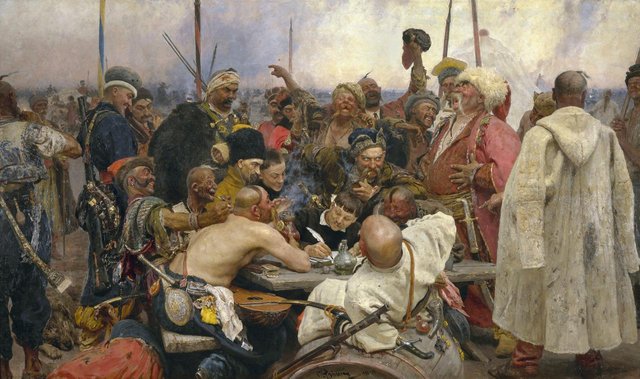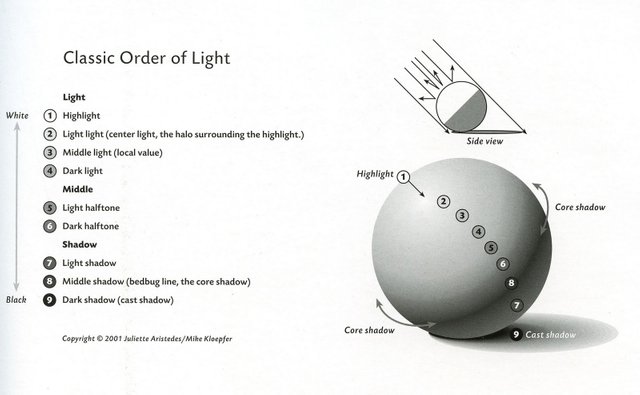What I appreciate most about Classical Russian drawings & paintings.
What I appreciate most about Classical Russian drawings & paintings.

(Original Russian artist is currently unknown)
Greetings Everyone,
Throughout the years of studying art, my practice, and overall aims towards self improvement on being a better painter, I have noticed my inspiration and gratitude towards Russian drawings/paintings have immensely grown.

(Reply of the Zaporozhian Cossacks by Ilya Repin)
Not only due their interpretations of the human figure and narratives continue to tug at my heartstrings, but their dedication in honing their craft with such sobering precision continues to bewilder me at an ever increasing rate.

(Two tsars by Ilya Repin)
What I appreciate about the developmental progression within the Russian atelier community is that they pushed their emphasis on the study of drawing further than any other academic lineages. These refined drawing skills I think jump out at me the most.


It appears that they have this uncanny ability to break down planes and forms right down to a science!

While art history isn’t something that I would claim is one of my strengths, I do remember being taught during my academic training that there was a time when several different lineages and schools of thought were in the midst of numerous debates and strife, the Russian Classical Tradition was kind of on its own and continued to transcend or excel while for lengthy periods other schools remained stagnant.
During my time spent at The Gage Academy of Art I forgot how many times it was recommended to me that I take some sculpture classes in order to improve my drawing abilities. In their defense they were absolutely right and I honestly still have yet to delve into that territory thoroughly, but through my observations it appears as though Russian atelier painters and draftsman have obtained this other worldly perspective in which they have been able to separate the physical tangibility of sculpting from the conceptual applications of sculpture.

(Here is an example of one Russian drawing book that was unanimously recommended to me in the atelier. )
In other words, it’s kind of like this idea I’ve toyed around with my classmates before where I thought that drawing is sculpture on a two dimensional surface and sculpture is drawing in 3 dimensions.
(I’d also like to take a moment and add that for anybody thinking that when you’re drawing you have an advantage because there are other perspectives you don’t see, I’m sorry to inform you that you’re sadly mistaken. Always remember that what isn’t seen in the drawing is just as important as what is actually seen.)

Still to this day I find that many of their methods and how they approach their work to be very elusive!
One of the most important things I have noticed is their ability to adapt to different lighting schemes and situations.

(The Stone Pickers by George Clausen)
There are so many paintings where I find the lack of core shadows and bouncing diffused light to be nothing short of phenomenal.
Typically with how I was trained and with most atelier schools around the world, we have been taught to interpret what we are drawing and painting within the confines of a single controlled light source.

So as an artist progresses through their work, in a sculpter-esque manner they have to consistently apply the concepts of how light behaves and how light falls on form.
This rational based practice of controlled light in an environment is essentially at its root, an idealization.
I believe that a LOT of Russian work shows that they were aware of this issue, the problem being that at least from a philosophical standpoint that treating light as a single light source and its shadows isn’t as practical as you might think in the long term, although it serves as a detrimental factor in establishing a proper foundation as an artist trained in the classical tradition.

(The Wood Gatherer by Jules Bastien-Lepage)

(Rural love by Jules Bastien-Lepage)

(Gathering Wood by Edward Simmons)
But of course if you look at most Russian academic work, diffused light is bouncing everywhere, just like in reality with very little core shadows.

(The Girl at the Gate by George Clausen)

(October by Jules Bastien-Lepage)

(Joan of Arc by Jules Bastien-Lepage)
As you can see from these paintings above, I believe they are perfect examples of what I’m attempting to describe.
It is as if you could almost feel and taste the crisp air in these overcast depicted paintings! They just ring with such light and clarity!
And while of course technically Simmons, Edwards and Lepage weren’t Russian by birth, you can definitely see that their skillsets correlate with Russian techniques.
If I had to bet, I’d say they were heavily influenced and inspired by the Russian masters!!
Interesting article and a great choice of examples. I really appreciate the drawings for their anatomic detail. The light in the paintings looks very natural and only working with little core shaddows bring the scenes to life.
🤓
Posted using Partiko iOS
Hello @jameszenartist, thank you for sharing this creative work! We just stopped by to say that you've been upvoted by the @creativecrypto magazine. The Creative Crypto is all about art on the blockchain and learning from creatives like you. Looking forward to crossing paths again soon. Steem on!
Hi! @jameszenartist. Your post has been upvoted by @celfmagazine, please consider supporting us to win a delegation of 20,000 STEEM POWER. You just have to follow the instructions below:
Your support it's very important for us.